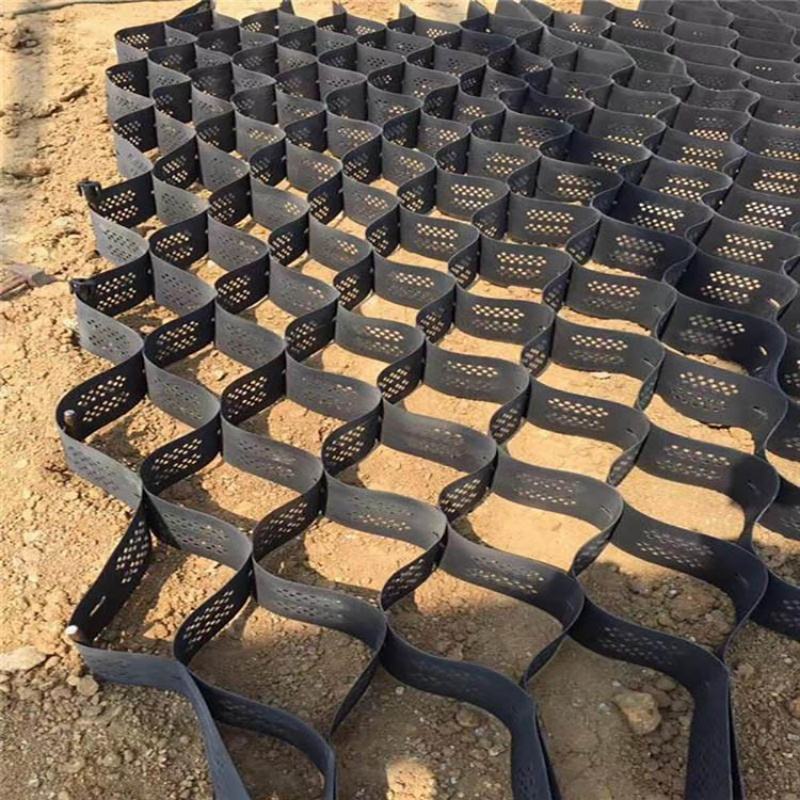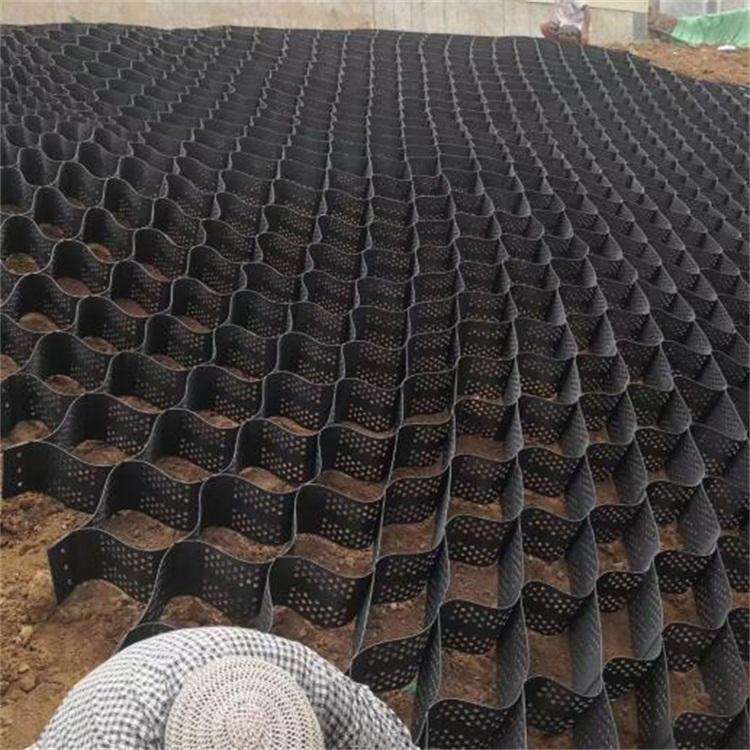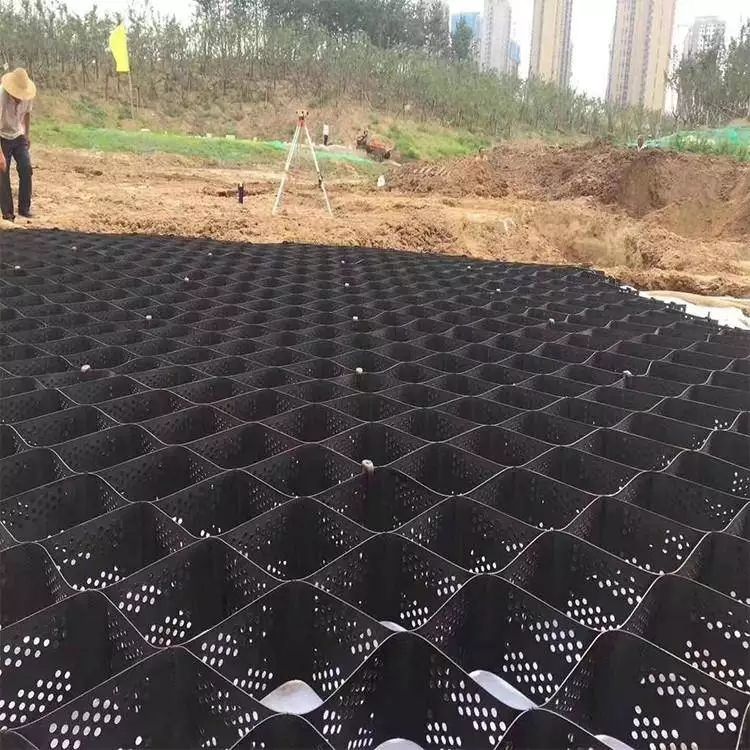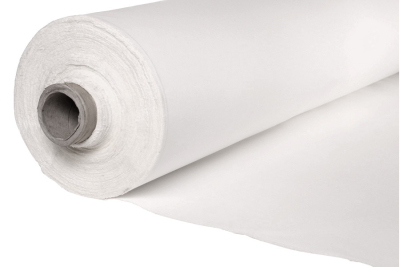From Slopes to Subgrades: Geocells – One Material, Multiple Uses, Cutting Costs and Improving Quality in Infrastructure Projects
From Slopes to Subgrades: Geocells – One Material, Multiple Uses, Cutting Costs and Improving Quality in Infrastructure Projects
In infrastructure work, one problem pops up over and over: how to stretch a budget while getting the job done right. Teams need materials that pull their weight across every part of a project—slopes, subgrades, erosion control. They also have to stand up to bad weather—downpours, snowstorms, sweltering heat—without costing a fortune. For years, this meant juggling three or four different products: one for slope stability, another to beef up subgrades, something else to stop erosion. It was chaotic—took too long, cost too much, and always felt like fighting against the materials instead of working with them. But lately, there’s a single solution changing the game: geocells. These flexible, honeycomb-style grids aren’t just good for one task. They work just as well on steep slopes as they do under road subgrades, and they do two things at once—save money and make projects sturdier. Even better, their design’s a lot like geocell driveway systems—the ones that keep home and business driveways from sinking or washing out after rain. That overlap isn’t a fluke; it’s proof of how adaptable geocell technology really is.
1. Slope Stabilization: Geocells Stop Erosion Without Heavy Concrete
Slopes have to be some of the most frustrating parts of any infrastructure project. Let’s be honest—whether it’s a highway embankment, a railway side slope, or a drainage ditch bank, steep ground just won’t stay put. Rain beats down, wearing away topsoil bit by bit. Wind blows across the surface, scraping off loose dirt like it’s nothing. After a few months or years, that slope starts sliding, and suddenly nearby roads, pipelines, or buildings are at risk of damage. The old fix? Pouring concrete or stacking heavy stone blocks. Sure, those might hold for a season or two, but they’re more trouble than they’re worth. They’re expensive to install, a nightmare to transport (have you seen how heavy concrete blocks are?), and they turn the slope into a dead area—no plants, no small animals, just a hard, odd surface that messes up the local ecosystem.
Geocells change all that. Workers grab the lightweight geocell panels, unfold them along the slope, and stake them down so they don’t shift. Then they fill each small cell with whatever works best for the area—local dirt, gravel, even a mix of soil and native grass seeds if they want vegetation to grow. That honeycomb shape is key: it locks the fill material tight, so rain can’t wash it away. And the best part? The soil and seeds let plants grow right through the geocells. Those plants become a living layer that gets stronger over time—their roots wrap around the geocell walls and dig deeper into the slope, making it even more stable than when they started.
You might wonder how this links to geocell driveway systems. Let’s keep it simple: a driveway slope—like the one leading up to a garage—deals with the same erosion problems as a highway embankment. Rain can wash away gravel, and after a while, ruts form. Geocell driveways use that same honeycomb design to hold gravel or asphalt in place, stopping those ruts and washouts. The only difference is size: slope geocells are bigger, but the way they keep loose material from moving? Exactly the same. That’s why so many construction teams trust geocells for both huge infrastructure slopes and small driveway slopes—they know the design works, no matter the job’s size.
2. Subgrade Reinforcement: Geocells Make Weak Soil Stronger
If slopes are the “sides” of a project, subgrades are the backbone—the foundation everything sits on. A subgrade is just the soil layer under a road, parking lot, or sidewalk. But if that soil’s weak—too soft, too wet, or full of rotting leaves and other debris—it can’t support cars, trucks, or concrete. The traditional fix here is a lot of work: dig out all the weak soil, haul it away with dump trucks, then bring in new gravel or compacted fill to replace it. It takes forever, costs a lot, and creates piles of waste that have to be taken to landfills.
Geocells cut through that hassle easily. Instead of digging out the weak soil, workers just lay geocell grids right on top of it. They fill each cell with gravel (or a mix of gravel and sand), then pack that fill down tight. The geocells spread the weight of the road or parking lot evenly across the whole subgrade. That means the weak soil doesn’t have to carry all the load alone. It’s like putting a supportive mat under the project—one that turns soft, unreliable soil into a stable base that can handle heavy traffic every day.
Again, geocell driveway systems use this exact idea. When someone installs a geocell driveway, they lay the geocells over the existing soil in their yard. The geocells hold the driveway gravel in place and spread the weight of cars across the soil, so the driveway doesn’t sink or get potholes. For infrastructure projects, it’s just a larger version: instead of supporting a family’s SUV, the geocells support 18-wheel trucks. But the core idea—using structure to make weak soil stronger—never changes. That consistency is why geocells are so easy for construction teams to use. If they’ve already used them for driveways, they already know how to use them for subgrades—no complicated training needed.
3. Cost Savings: Geocells Cut Expenses at Every Stage
One of the biggest reasons teams like geocells for infrastructure projects is how much money they save. Let’s break it down. First, material costs: geocells are way cheaper than concrete or stone blocks. A square meter of geocell panels costs just a fraction of what a square meter of concrete does. And since they’re lightweight, transporting them is cheaper too—one truck can carry enough geocells to cover a large area, while concrete or stone would need multiple trips. That adds up fast, especially on big projects.
Then there’s labor cost. Installing geocells is quick: a small team with basic tools can lay hundreds of square meters in a day. Compare that to concrete, which needs mixing, pouring, and then waiting days or weeks for it to dry. Less work time means lower labor bills—no one’s putting in extra hours just to get the material in place. There’s also maintenance cost: geocells last 15 to 20 years with almost no upkeep. Concrete cracks over time and needs patching; stone walls shift and need restacking. But geocells are made from tough HDPE plastic that can handle UV rays, water, and rust—so they don’t break down or need repairs. No more unexpected bills for fixing worn-out materials.
Even long-term costs are lower. Because geocells stabilize slopes and reinforce subgrades well, projects last longer. A road with a geocell-reinforced subgrade won’t need resurfacing as soon as one with a traditional subgrade. A slope protected by geocells won’t slide and need expensive emergency repairs after a storm. That means fewer unexpected costs later—no last-minute budget changes to fix problems that could’ve been prevented.
Geocell driveway systems offer the same savings. A homeowner who installs a geocell driveway spends less on material and labor than someone who puts in a concrete driveway. And since geocell driveways don’t need resurfacing or patching every few years, they save money over time. For infrastructure teams, this home use case proves geocells keep their cost promises—if they work for driveways, they’ll work for bigger projects too.
4. Quality Improvement: Geocells Make Projects More Durable
Saving money on a construction project is great—but that win fades fast if the work doesn’t hold up. Geocells stand out here because they don’t just cut costs; they make projects stronger and longer-lasting. Let’s start with slope performance. Concrete slopes, the old go-to, are stiff and unforgiving. When the ground moves—from freezing and thawing or heavy rain—concrete cracks. Once those cracks form, water seeps in, and soon erosion is back, undoing all the work. Geocells, though, are flexible. They move with the ground instead of breaking. Even if the slope shifts a little, that honeycomb structure stays intact, keeping the soil inside locked tight and stopping erosion.
When it comes to subgrades, geocells make the base much more consistent. Traditional subgrades often have weak spots—places where the soil wasn’t packed enough, or where water collected and softened the ground. These weak spots turn into potholes or uneven surfaces on roads and parking lots, forcing early repairs. Geocells fix this by spreading weight evenly across the whole subgrade. No more soft spots; the road or parking lot stays flat for years without issues.
Eco-friendliness is another big quality boost from geocells. These days, more infrastructure projects need to meet sustainability standards, and geocells fit right in. They’re made from recyclable HDPE plastic—no chemicals leak into the soil or water, so they don’t harm local ecosystems. And since they let plants grow through them, they help capture carbon and support wildlife like insects and small mammals. Compare that to concrete or asphalt, which soak up heat (making city “heat islands” worse) and stop plants from growing. Geocells keep the area cooler, greener, and more natural.
Geocell driveway systems get the same quality benefits. A geocell driveway holds up better than a regular gravel one—no ruts, no washouts, and it stays level for years. It’s also more eco-friendly than concrete because rainwater soaks through it into the ground, instead of running off into storm drains and causing flooding. For big infrastructure projects, this matters: if geocells work for driveways to be durable and green, they’ll do the same for highways, railways, and other large jobs, meeting strict modern standards.
5. Easy Installation: Geocells Don’t Require Special Skills
Most construction teams hesitate to try new materials—and who can blame them? The last thing anyone needs is a product that makes installation a headache. If using something new means sending workers to expensive training or buying special gear just to install it? That’s hard to justify, especially when projects are already tight on time. Geocells are different, though. Even teams that have never touched a geocell panel before can figure out how to install them—no stress, no extra steps that slow things down.
Take installing geocells on slopes, for example. It’s not a complicated process that needs an expert. First, tidy up the area: rake away loose sticks, scoop up rolling rocks, pull out dead weeds that clutter the space. Then smooth out lumps or bumps in the soil—you just need a flat surface so the geocell panels don’t sit crookedly. Next, unfold the panels and hammer stakes into the ground to keep them from sliding when you fill them (and a nice touch: most geocell kits come with stakes, so you don’t have to run to the hardware store mid-job). Then fill each small cell with whatever works for the spot—local dirt, gravel, even a mix of soil and grass seeds if you want plants to grow later. For small areas, a regular garden shovel works; for bigger stretches, a small loader speeds things up. Finish by tamping the fill down a little—use a hand tamper or small roller—to make sure it’s packed tight. That’s it. No mixing strange materials, no waiting days for something to dry, no renting big, expensive machines that eat into the budget.
Installing geocells for subgrades is almost the same, just a little different. First, level the soil—contractors call this “grading,” but it’s just making sure the ground’s flat so the panels lay right. Then spread out the geocell panels, fill each cell with gravel, and pack that gravel down well. It’s so simple a team can learn it in a day. No need for weeks of boring training—just walk them through the steps once, show them the basics, and they’re ready to work.
Geocell driveway systems are just as easy to install, too. Even regular homeowners can put in a small geocell driveway by themselves, using basic tools they probably already have in the garage—no need to hire an expensive professional. For infrastructure teams, that’s a big win. They don’t have to spend a lot on training courses to get their crew comfortable with geocells. The team can start installing them right away, which cuts project time and gets the job done faster—without sacrificing quality.
6. Versatility: Geocells Work in Any Climate or Soil Type
Infrastructure projects can’t choose where they’re built—they have to work in deserts, wetlands, cold areas, and everything in between. Geocells handle it all, no matter the location.
In cold climates, where freeze-thaw cycles can push the ground up and crack concrete, geocells’ flexibility saves the day. They move with the frozen soil instead of breaking, so the slope or subgrade stays stable. No more cracked concrete that needs patching every spring. In wet climates, geocells drain well—water seeps through the fill material into the ground, instead of pooling on top and causing erosion. No more mudslides or washed-out slopes after heavy rain. In sandy or rocky soils, which are hard to stabilize with traditional methods, geocells lock loose material in place so it doesn’t shift. No more sand washing away or rocks rolling down slopes.
Geocell driveway systems prove this versatility too. A geocell driveway works in a rainy Pacific Northwest backyard just as well as a dry Arizona yard. It handles freeze-thaw in Minnesota and hot heat in Texas. For infrastructure teams, this means they can use the same geocell product across multiple projects, even if they’re in different regions. They don’t have to stock different materials for different climates—geocells do it all.
Wrapping Up
Infrastructure construction doesn’t have to force a choice between cost, quality, and versatility. Geocells show one material can handle slope stabilization, subgrade reinforcement, and more—all while saving money, making projects more durable, and working in any condition. Their link to geocell driveway systems isn’t a coincidence; it’s proof a simple, effective design can scale from small home projects to big infrastructure jobs.
As more construction teams look for smarter ways to work, geocells are becoming a must-have. They cut material costs, speed up installation, and make projects last longer—all while being better for the environment. Whether building a highway, railway, or driveway, geocells prove sometimes the best solution is the one that does more with less.
For anyone in infrastructure work, the message is clear: geocells aren’t just a trend—they’re a better way to build. And with their track record of success (from driveways to slopes), it’s easy to see why they’re here to stay.







